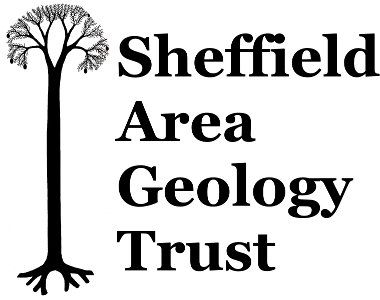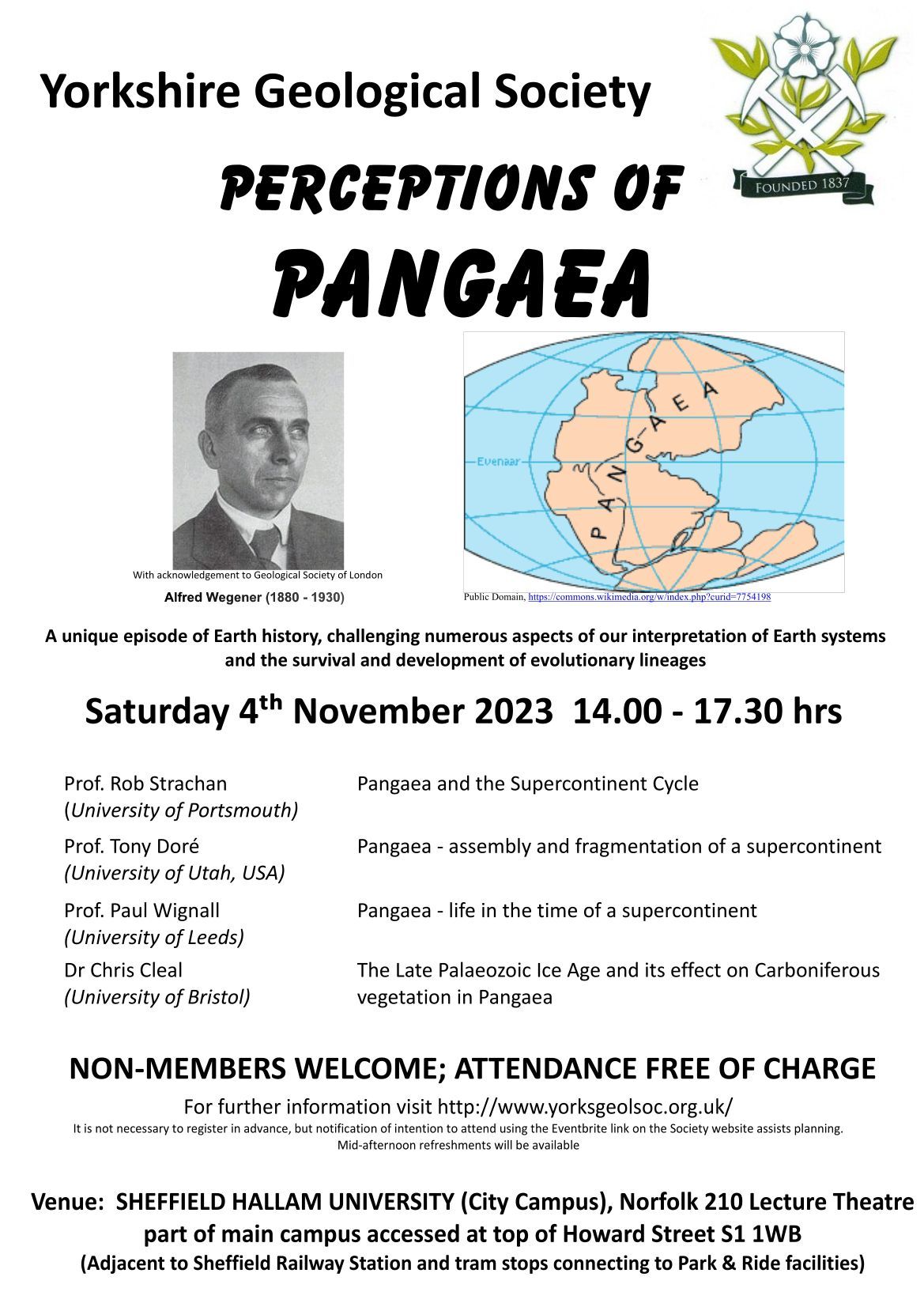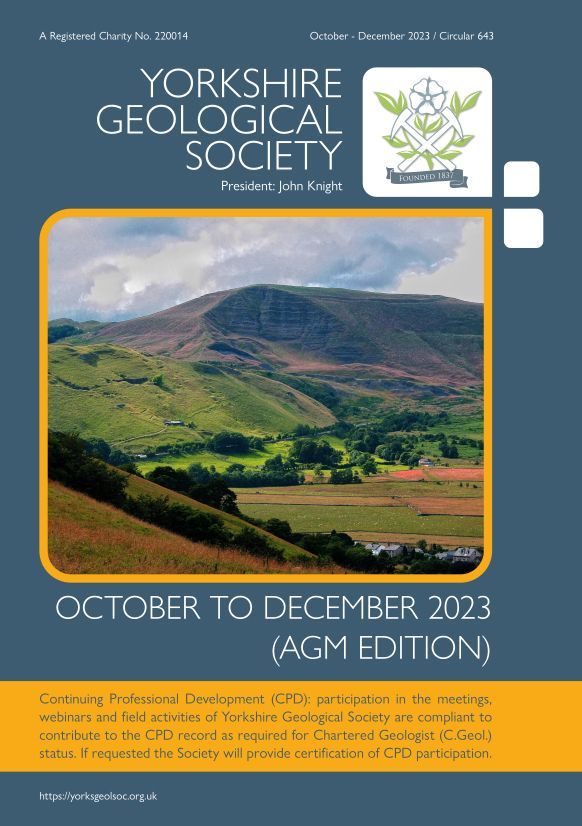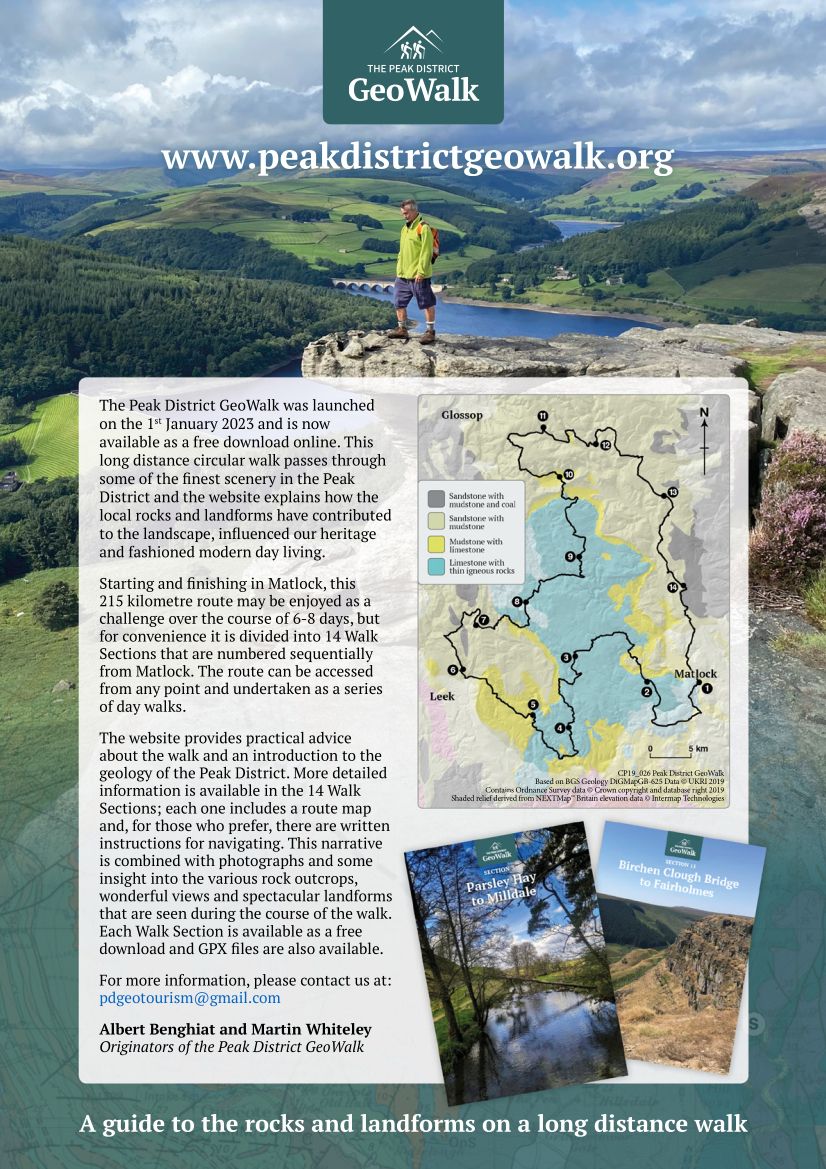SAGT News Archive 2023
Perceptions of Pangaea - Saturday 4 November
Geological Ramblings - Saturday 16 September 2023
This year’s Geological meeting will be held in the newly refurbished General Cemetery. Meeting at 2pm at the Cemetery Lodge Gate on Cemetery Avenue, Sheffield S11 8NT and finishing at about 3.30pm in the Samuel Worth Chapel Café on Saturday 16th September.
This year will be examining the use of rock in the manufacture of Gravestones and Monuments, looking at rock types, their response to weathering and trying to decide where the material originated.There is also a Geological Stone Spiral within the graveyard over which, following an introduction to the rock types, we will be holding a ‘Guess the Rock’ competition, no prizes other than being able to tell your friends that you might become a Geologist.
Your leaders will be Peter Kennett, John Cripps and Ian Prior all of whom had successful careers in various forms around Geology and Engineering.
We look forward to meeting you all. Although the Cemetery paths have been recently refurbished and improved we would suggest that you wear strong walking shoes and bring a raincoat in case of rain. The walk will take place whatever the weather is like.
Dogs with an interest in Geology are allowed in the Cemetery if they are on short leads.
For any further details please contact Ian on 07966903642
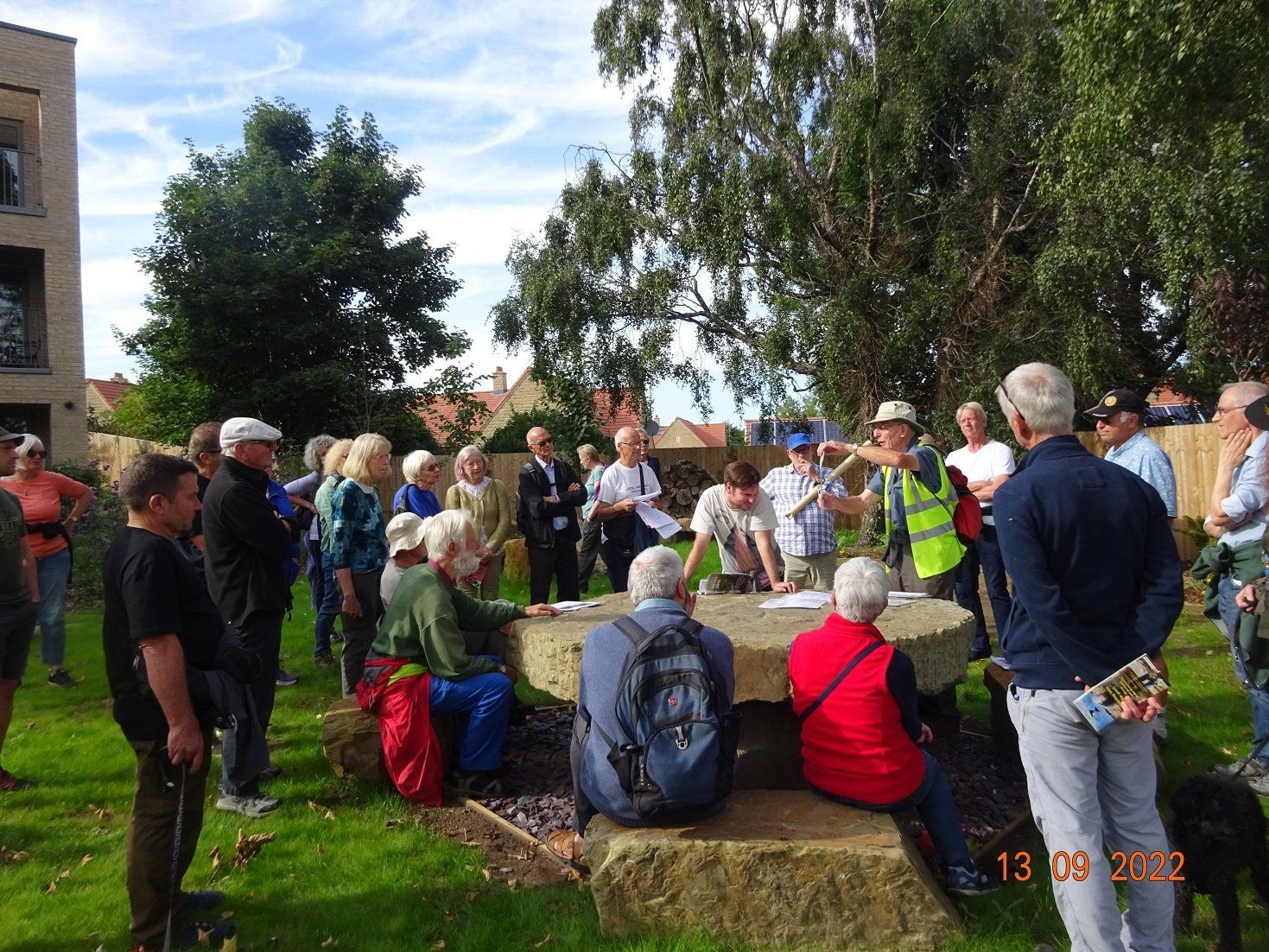
Last year's Nether Edge Geology Walk
Wadsley Geoheritage Project – posted 24 July 2023
SAGT Chairperson Duncan Hawley and associate member Dr Brian Whalley have begun to scope out a Geoheritage project around Wadsley, which takes in the ‘Commons’ (Wadsley and Loxley) with views across the Loxley Valley, and a transect down the valley side to the Don Valley. Both Duncan and Brian live in the area – Duncan was born and bred in Wadsley. The idea is to link several sites that have ‘roots’ in the local geology and scenery and weave into a story that brings together with human activity, past and present that, consciously or unconsciously, had or have geology at their heart.
Brian and Duncan have published a well illustrated article about their proto-project in the latest issue of the magazine Earth Heritage, No. 59, Summer 2023.
This fossil fish sculpture is a central feature in the children’s playground in Wadsley Village Park. The children use it to clamber on in physical and imaginative play.
The fossil fish has a resemblance to those found back in the Carboniferous Period of the Coal Measures – the rock that underlays the park. Look carefully around the base of the sculpture and you should spot an Arthropleura creature and the roots and trunk sections of the giant clubmosses known as Lepidodendron. Duncan and Brian think the sculpture was inspired by the nearby Wadsley Fossil Forest Site of Special Scientific Interest, which has a life-size cast of one of the Lepidodendron stumps on display.
However, to date, information on the original commission, design and artist has proved elusive. If any reader can help shed any light on the origins of the Wadsley fossil fish, then please do contact SAGT using our email contact button.
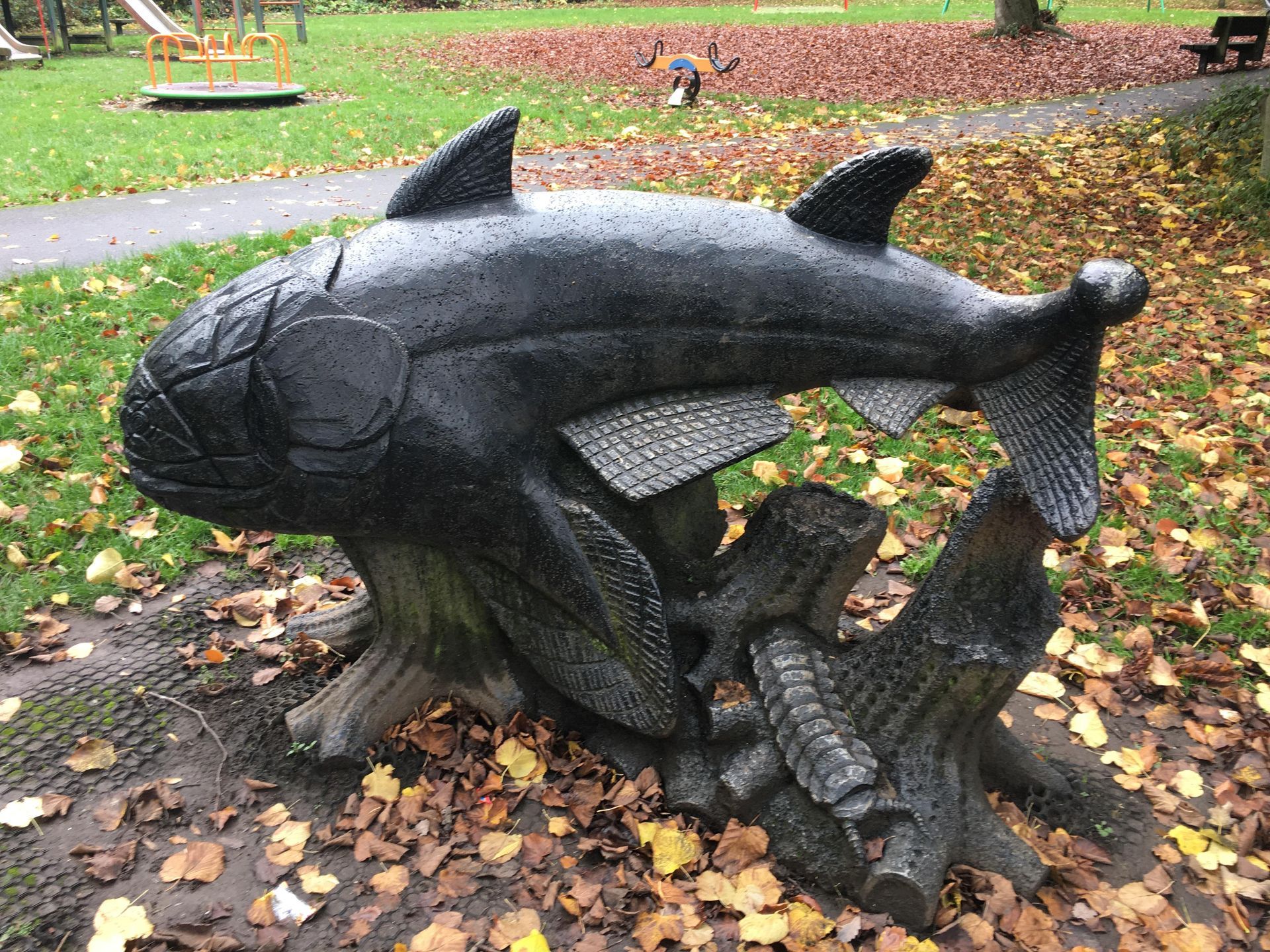
Feeding childrens’ geo-imaginations with a fossil fish
Young geologists in action - 7 July 2023
As part of their day of service to the community, two 6th Form geologists and two teachers from Sheffield Girls’ High School spent a muddy morning in the Porter Valley clearing access to two sites and cleaning up parts of the faces in the river cliffs. This has greatly improved access to an excellent monocline in sandstones a short distance downstream from the bridge at Forge Dam. Further upstream, the Gastrioceras cancellatum Marine Band was uncovered, near the base of a steep river cliff beside Clough Lane. After a patient search, poorly preserved goniatites were eventually found in a very thin band within a sequence of barren shales and mudstones.
The team was rewarded with ice creams from the Forge Dam Cafe, as they relaxed in the hot sunshine afterwards!
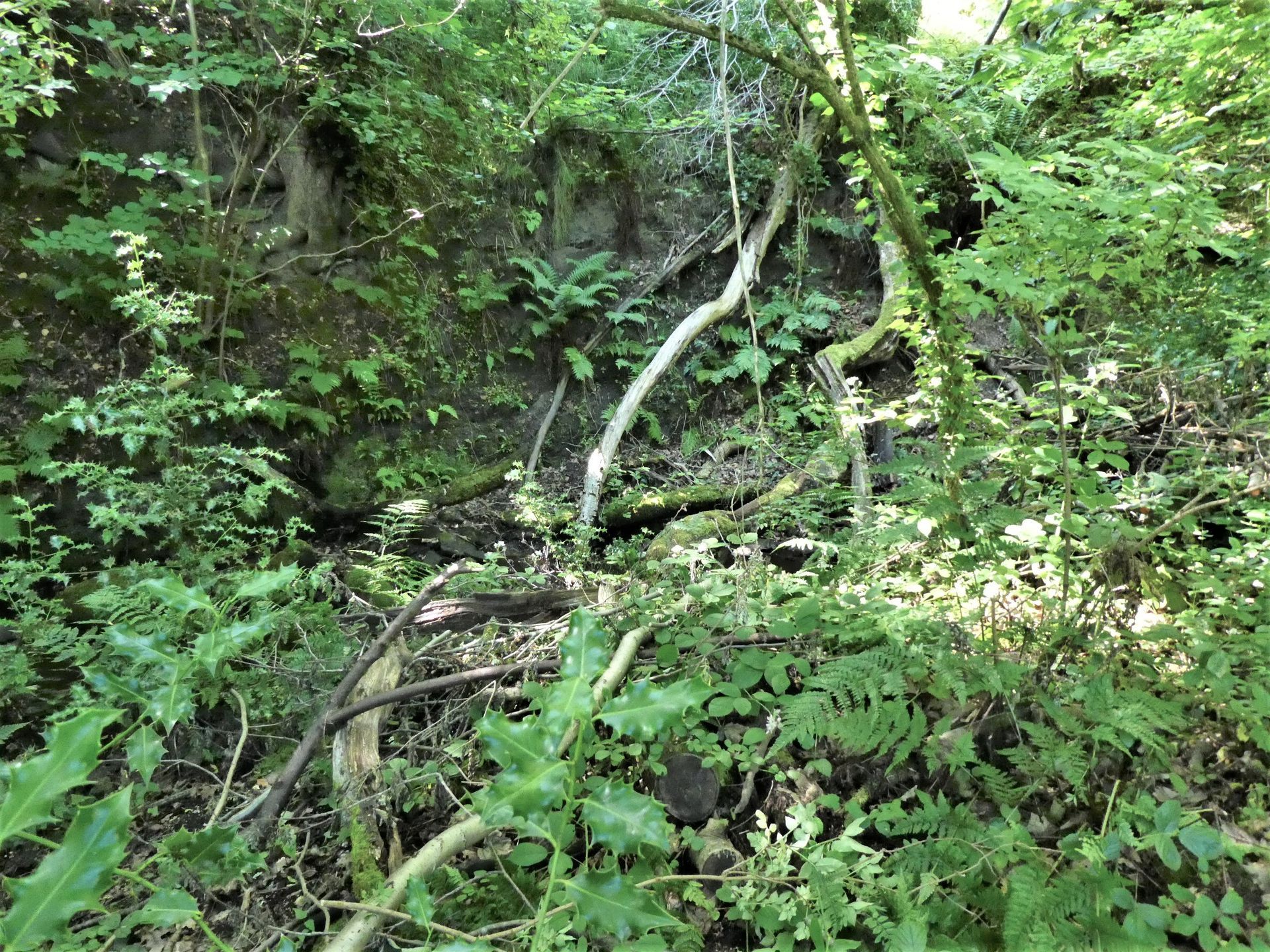
The marine band site before clearance of fallen timber etc
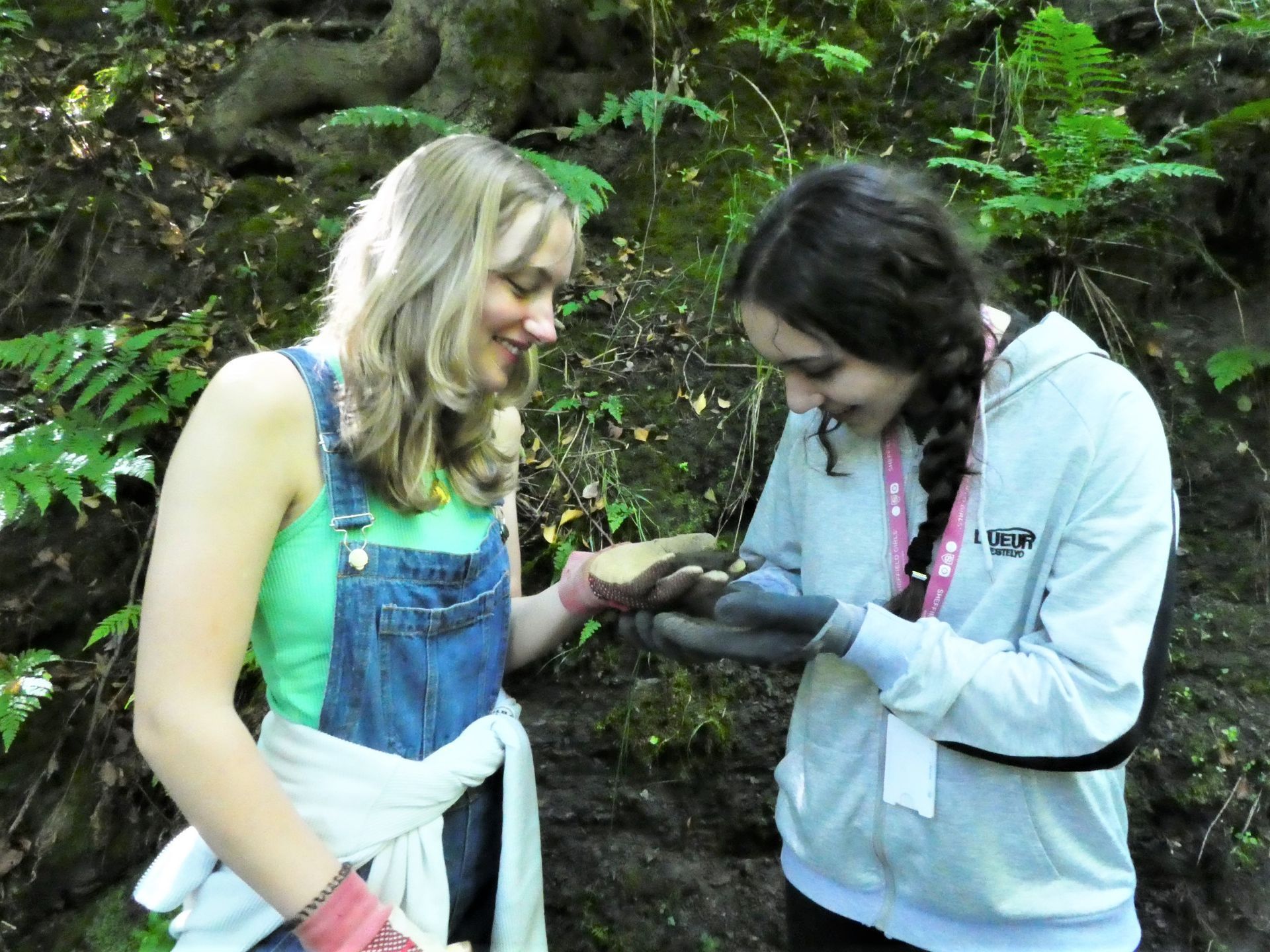
The students examining crushed goniatite fossils
in the shales
Sheffield City Centre Geology Walk - 25 May 2023
SAGT offered a walk in Sheffield City Centre on 25 May , investigating the uses of building stones and the evidence which the stones themselves provide about their geological origins. A small but enthusiastic group was led from the forecourt of the City Hall to the monoliths below the HSBC building in Charter Square, then back up Pinstone Street, along Surrey Street and Norfolk Row onto Fargate and finally round to the back of the Cathedral.
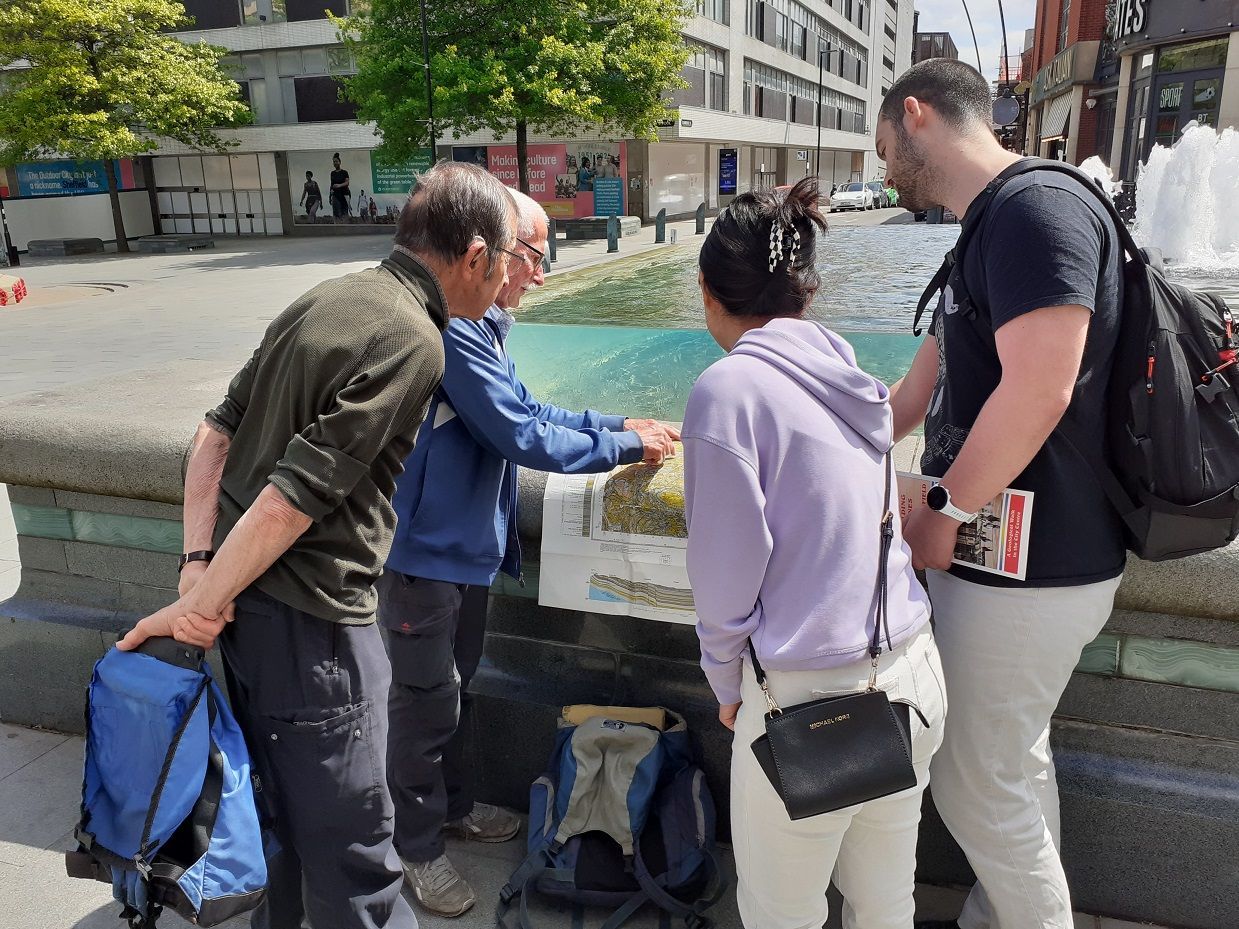
A briefing on the underlying geology of Sheffield
from the BGS map
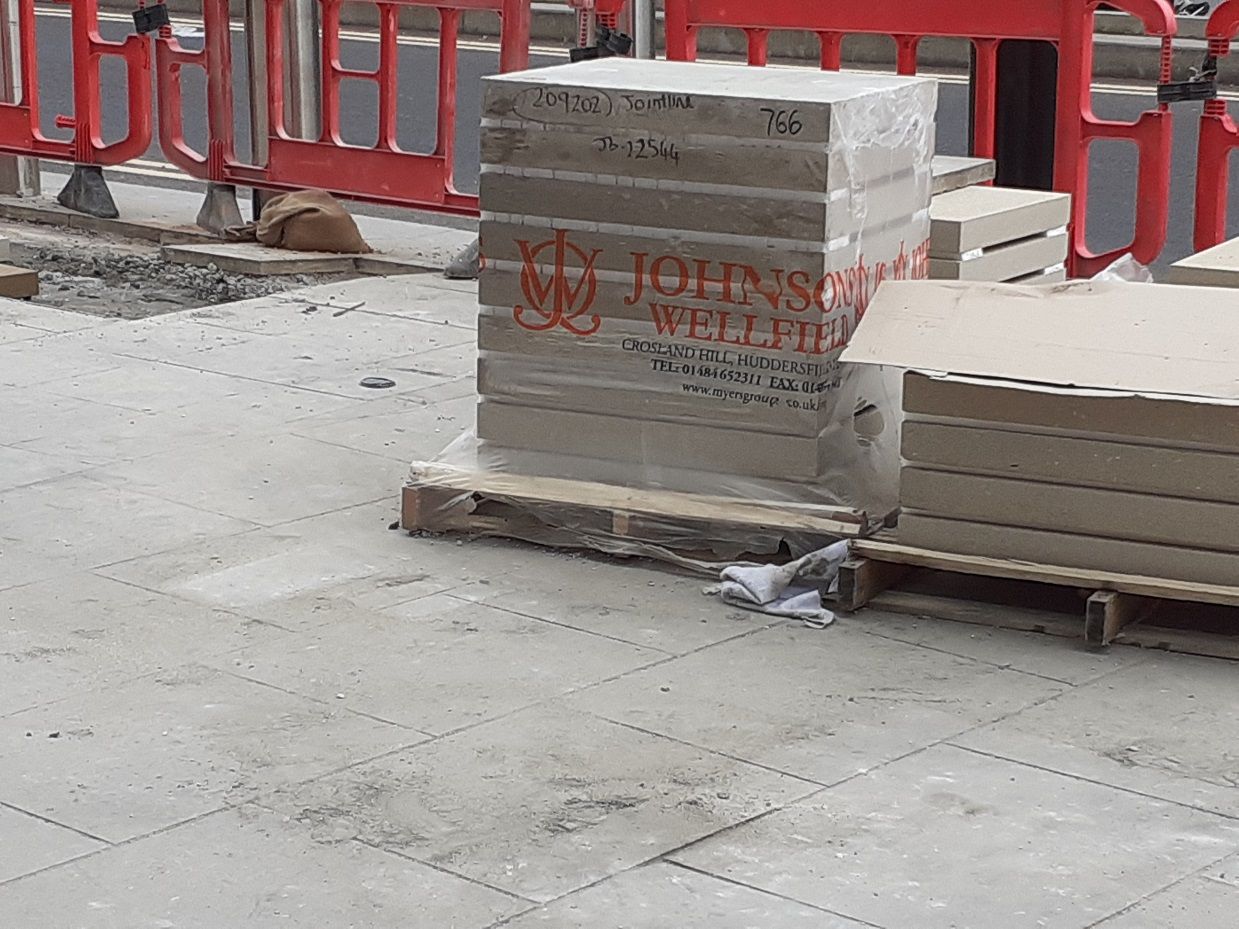
75mm thick slabs of Crosland Hill Sandstone
being laid on Pinstone Street
The route covered a range of sedimentary, igneous and metamorphic rocks, each of which contain structures and textures which provide evidence regarding their origin. There is currently much work in progress to refurbish the area, and it was encouraging to see Pennine sandstones being used in the paving of Pinstone Street, although we were left wondering whether the distinctive Caithness Flags will be replaced when contractors have finished digging up the sides of Fargate.
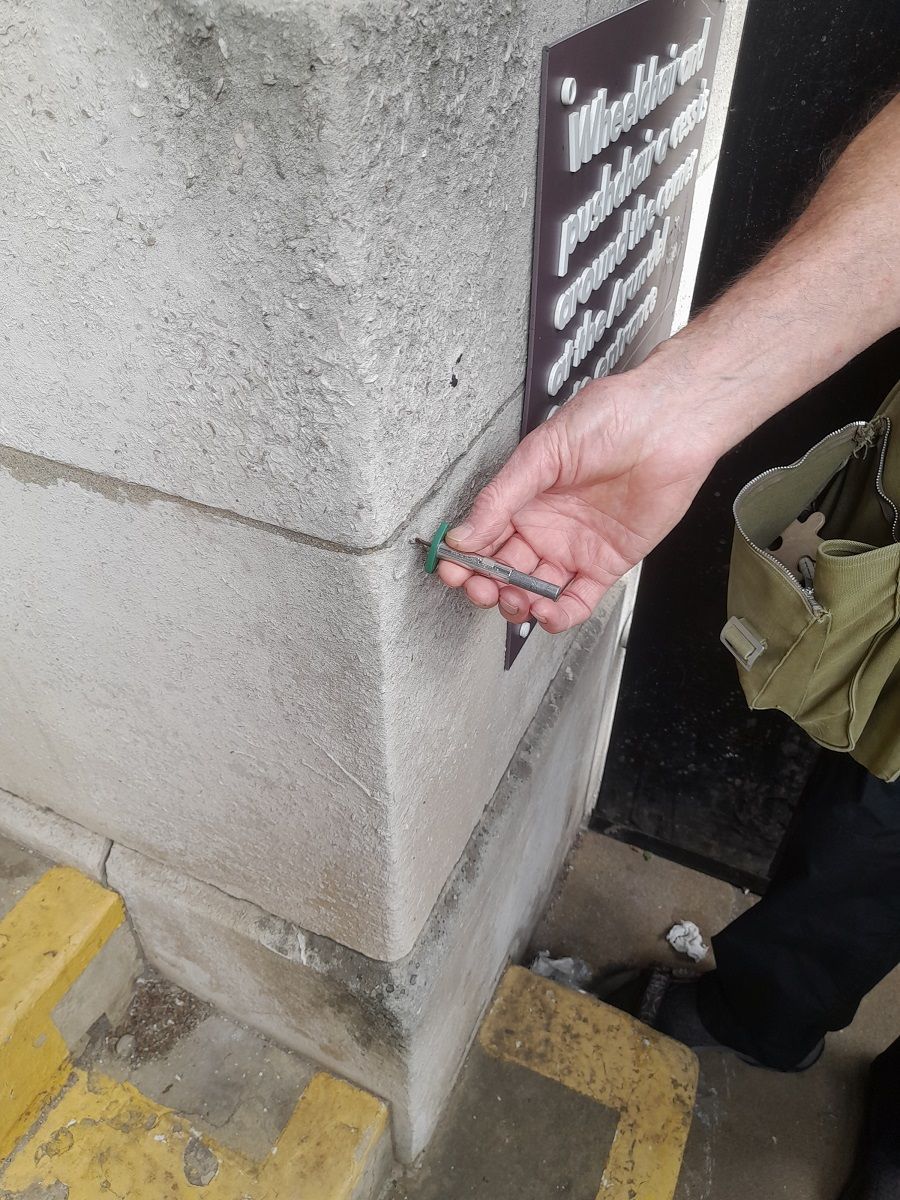
Measuring rates of weathering between
an oyster shell and the matrix
(2mm in 90 years)
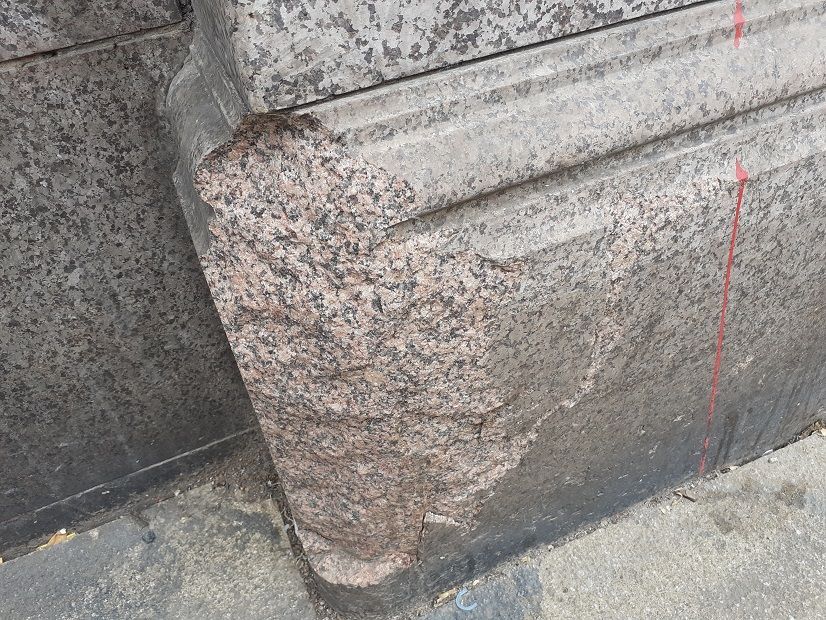
A broken corner of Peterhead Granite at Costa Coffee,
showing the undesirable effects of “cleaning”
Evidence of the shallow water marine origin of the oolitic Portland Stone of the City Library could be examined with a hand lens. The rate of weathering can be estimated by measuring the difference between the more resistant oyster shell fossils to the limestone matrix, using a tyre depth gauge.
A recently broken corner of the Peterhead Granite of the Costa coffee shop on St Paul’s Parade shows the folly of past “cleaning” of the face with strong acid, which had bleached the attractive pink colour of the natural granite.
The two hour walk ended at the alabaster (i.e. gypsum) grave slab at the rear of the Cathedral. When placed outside in the 1960s it was in pristine condition, but gypsum dissolves in water, so the surface now resembles a sugar cube which has spent too long in the tea cup!
Readers who may wish to explore much of this route for themselves may download the field guide from this link
Yorkshire Geology Day - 29 April 2023
SAGT offered a series of hands-on activities at the annual Yorkshire Geology Day, held at the National Coal Mining Museum, on Saturday 29th April. In view of the devastating earthquakes in Turkey and Syria in February, the activities were set up to try to demonstrate the build-up of stress in the Earth before an earthquake, and why some buildings collapsed while others did not. Although not relevant to the February quakes, a tank of water was used to find out if the speed of a tsunami wave depends on the depth of water in which the wave is being transmitted. Good wet fun, but not entirely accurate!
A set of specimens with puzzling structures also generated some lively discussion, e.g. the bivalve escape burrow shown here.
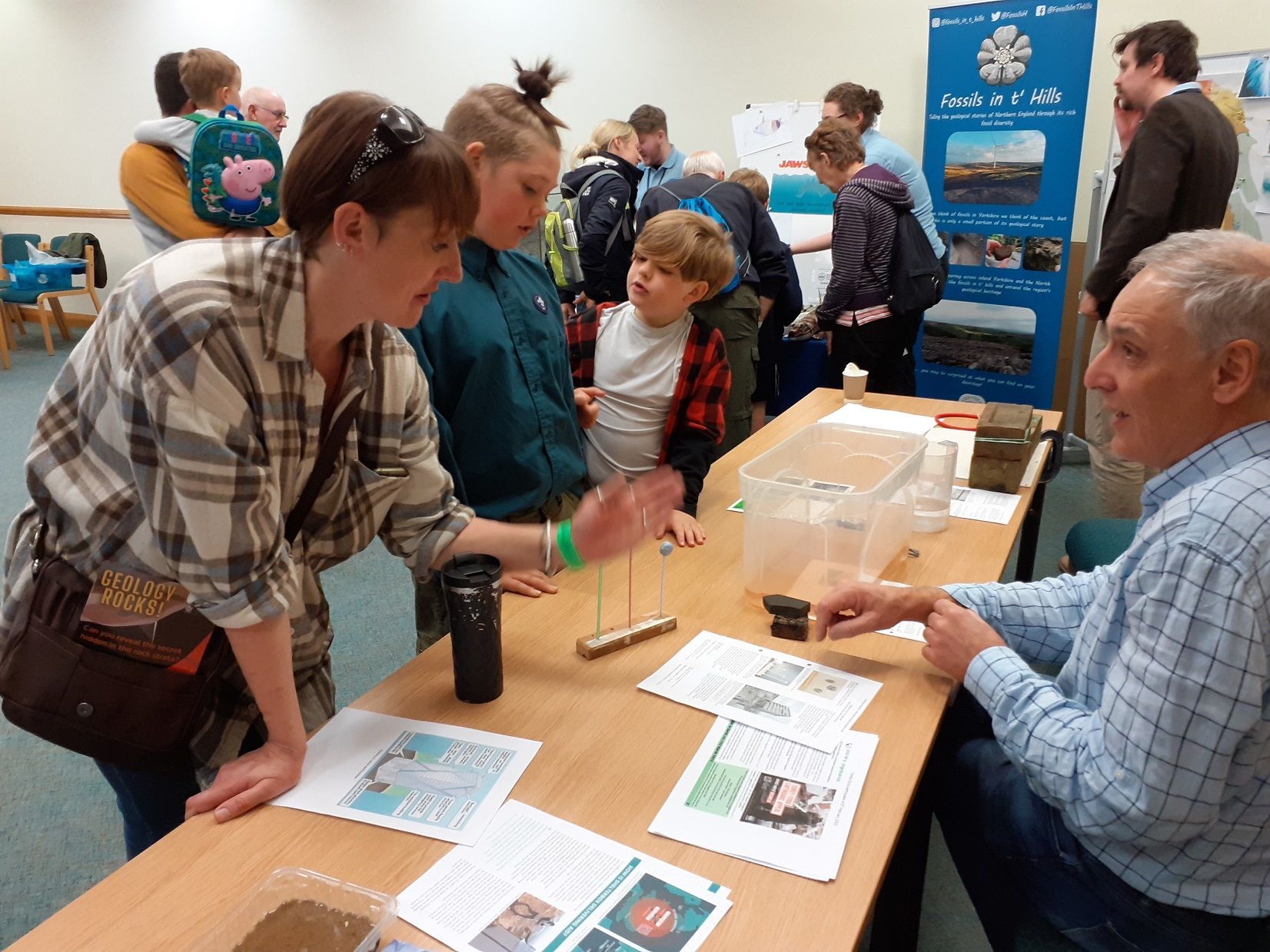
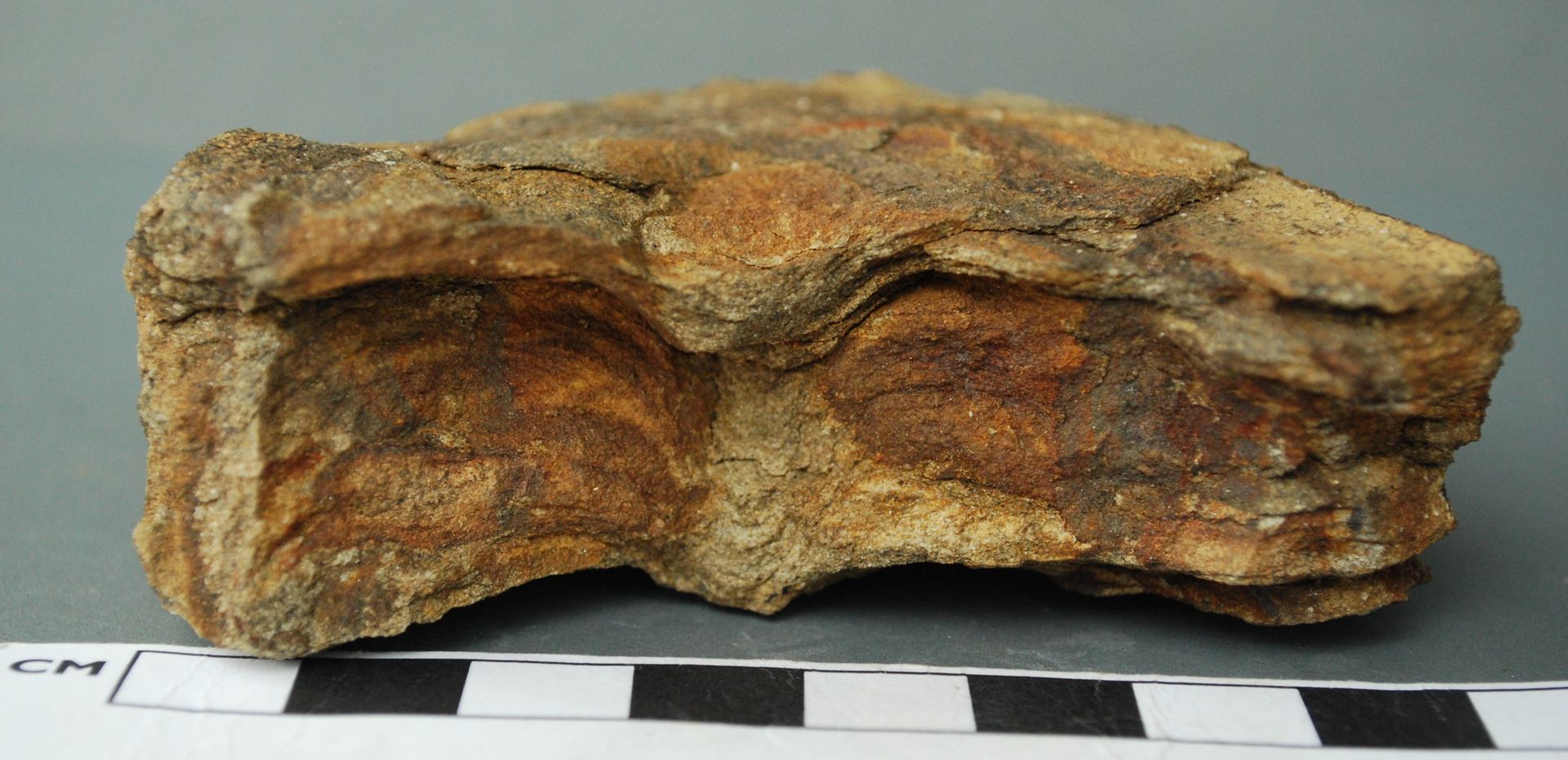
Microscopic fossils from the Cadeby Formation - posted 30 January
Stephenson & McLean (2023) describe well-preserved microscopic fossils from the Permian Cadeby Formation in Cadeby Quarry, near Sprotbrough. The Cadeby Formation was deposited about 260 million years ago in a marine environment and the fossil material includes the remains of planktonic plants and animals that lived in the Permian Zechstein Sea. This sea extended from eastern England across to northern Germany and Poland. Present-day Sprotbrough lay very close to the shore of this ancient sea, with land to the west. Most of the microscopic fossil material from Cadeby is conifer pollen, which was washed in to the sea from the surrounding land. These provide an insight into conditions on the Permian desert land surface at the time that the Cadeby Formation was being deposited in the Zechstein Sea.
As well as being used to reconstruct ancient environments, these microscopic fossils may be used for fingerprinting individual layers of rock in different areas and relate them to each other in a technique called “correlation”. The recovery of such well-preserved material from Cadeby Quarry suggests that there is potential for more and better correlation in the Permian rocks. This could be used to support the increased importance of the Permian rocks in decarbonisation technologies such as subsurface hydrogen storage.
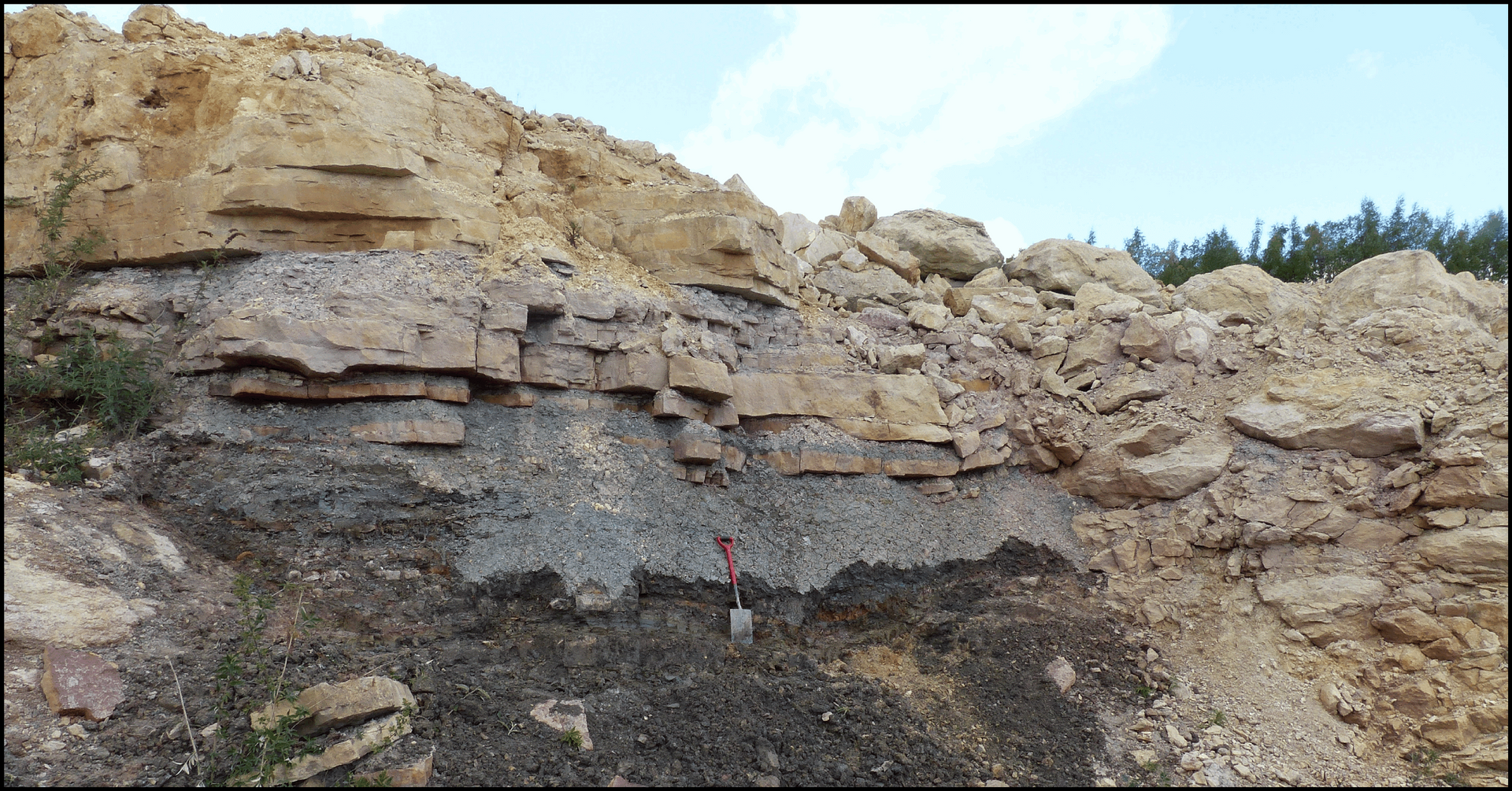
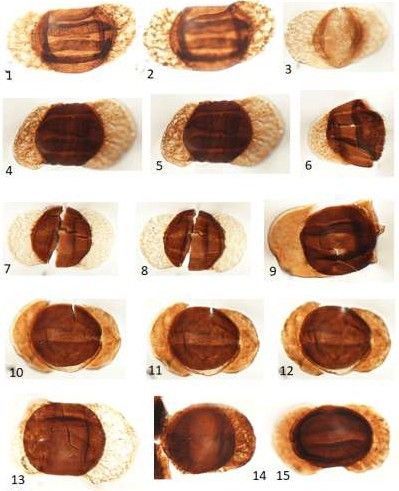
The rocks at Cadeby Quarry (from Stephenson and McLean, 2023)
Well preserved conifer pollen from the Cadeby Formation
(from Stephenson and McLean, 2023)
STEPHENSON, M.H. & McLEAN, D., 2023. Late Permian palynomorphs from the Cadeby Formation, Cadeby Quarry, Yorkshire, UK. Revista Italiana di Paleontologia e Stratigrafia, 129, 25-47. DOI: 10.54103/2039-4942/17850
Boston Park, Rotherham, reveals a geological ‘omelette’ - posted 14 January
A survey by SAGT members, at Boston Park, Rotherham, carried out at the end of last year, found a rather unusual feature in the rock face. The sandstone rocks at Boston Park, are unusual in themselves in that they are a distinctive red colour, unlike other sandstones in the surrounding Coal Measures sequence, and for earlier geologists this caused some head-scratching. The ‘Rotherham Red’ rock has been written about by SAGT member John Hunter in a 2017 article[1].
During the survey a rare sedimentary structure in the ‘Rotherham Red’ rock was observed. Normally beds of sediment are deposited horizontally (in calm water) or as cross-bedding (at an inclined angle) in a current. But in the newly discovered feature the bedding is over-turned, rather like an ‘omelette’. In fact, this is the name given to the feature by one geologist who described one other example in the northern Pennines. Other geologists who have seen these features have given them the more technical name of ‘recumbent deformed cross-bedding’.
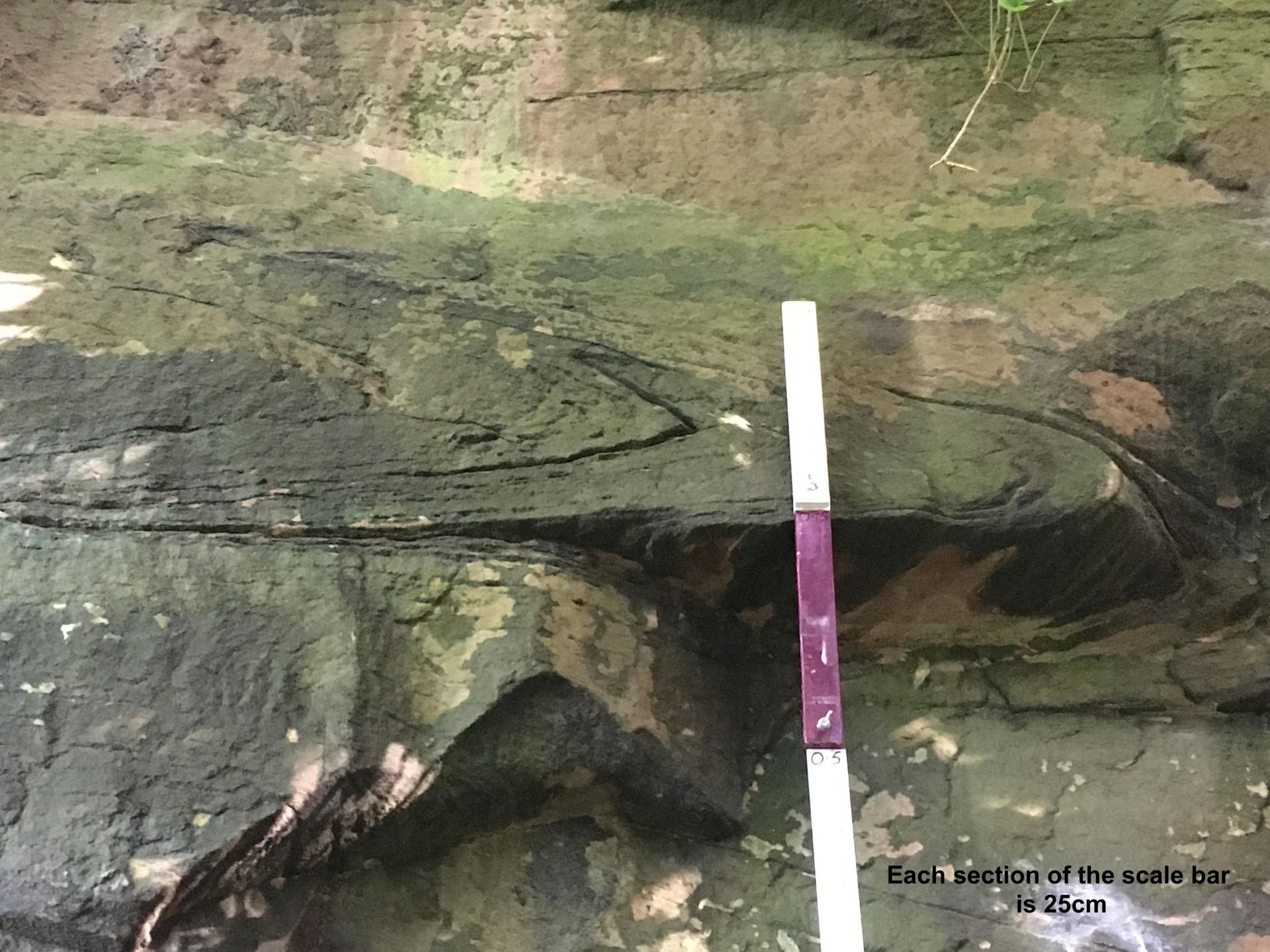
Omelette structure in Boston Park sandstone - Duncan Hawley
Dr Geraint Owen, an expert geologist in these features, tells SAGT that there are only a handful of the ‘omelette’ structures recorded around the globe. He did experiments in a laboratory to create the conditions to reproduce the feature. It is caused by a bed of sediment being super-saturated with water, so that if disturbed, the sand grains separate, it becomes plastic and will deform. The deformation is lateral due to a sudden strong current in water above disturbing and ‘dragging’ the bed so it turns over into the omelette shape. It is suspected this situation is much more common than the rather rare occurrences of geological ‘omelette’ structures might suggest, but in most cases the overturned bed is eroded by the strong current that created it, so it ‘disappears’. The strong current producing the Boston Park structures is likely to have resulted from the onset of a sudden flood. There are other soft sedimentary features in the rocks at Boston Park and work is on-going in trying to determine if there is further evidence for the sudden flood hypothesis.
SAGT welcomes local interest in geology, please do contact us if you would like to get involved in geoconservation – enthusiasm is more important than expertise in geology.
[1] Hunter, J. 2017. Rotherham Red Rock: an example of Permian, structurally controlled, deep secondary oxidation. Mercian Geologist, 19(2), 77-85
